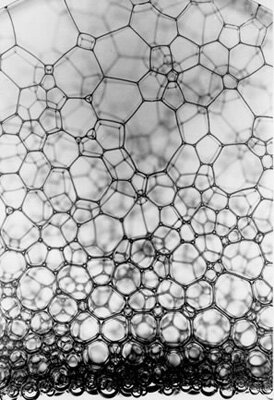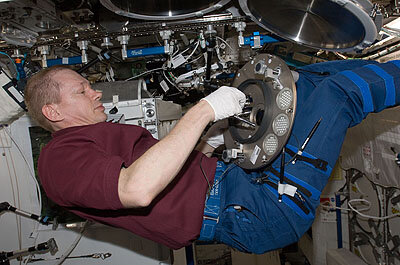Physics and materials
On Earth, gravity often leads to unwanted effects when processing materials. Buoyancy, convection and sedimentation can hamper creating the ‘perfect’ alloy or compound.
Various experiments performed on Earth have tried to unravel how gravity influences the formation of materials, but its effects are not yet fully understood.
To improve quality and reliability of mass-produced materials on our planet European scientists are running experiments in space.
In weightlessness, researchers can experiment in carefully-controlled environments on metals, plasma, fluids and even textiles.
Materials of the future


Access the video
Scientists are investigating the effects of microgravity on metal microstructures, especially on liquid metals that form alloys.
These alloys can be found in turbine blades used for jet engines to highly sensitive X-ray detectors for medical diagnostics.
These ‘space-age’ metals are also important for producing advanced catalytic powders to speed up chemical reactions, saving both time and energy for the pharmaceutical, chemical and food industries.
Plasma, most commonly found in neon lighting is considered to be the fourth state of matter, as it is distinct from a gas, liquid or solid. Plasma research is part of ESA’s science programme. Microchip production and plasma medicine can benefit from fundamental research into this phenomenon in Earth orbit.
Bubble trouble

Bubbles, foams and emulsions are fickle and constantly change. This has more importance to our daily lives than you might think. Many of the foods we eat are a form of emulsion, foam or bubbles, think of mayonnaise, chocolate mousse and carbonated drinks. Their structure and the forces that create and control them still puzzle phycisists and chemists, no matter how often they are used by chefs and the food industry.
The study of foams and emulsions in weightlessness has wide practical applications. Solidified foams, for example, are as strong metal but much lighter, so they are used in advanced aerospace technology and manufacturing as well as modern consumer cars.
Foams and emulsions are important for personal care products and waste treatment, and for food and oil companies. Food companies, for example, are interested in the properties of champagne bubbles and chocolate mousse in space to improve their products on Earth.
Material toolbox

A European state-of-the-art space combo is fostering the discovery of brand-new materials, processes and energy. The Materials Science Laboratory and the Electromagnetic levitator complement each other aboard the International Space Station.
The Materials Science Laboratory facility is ESA’s contribution to NASA’s First Materials Science Research Rack in the US module Destiny. It allows scientists to run experiments on intermetallic alloys and crystallisation of semiconductors in a vacuum, as well as in extremely pure gases.
Part of this is the Electromagnetic levitator facility. It can heat metals up to 1800°C while using electromagnetic fields to keep the metals in place. Melting and solidification take place without containers that could influence results as the materials float in midair.







